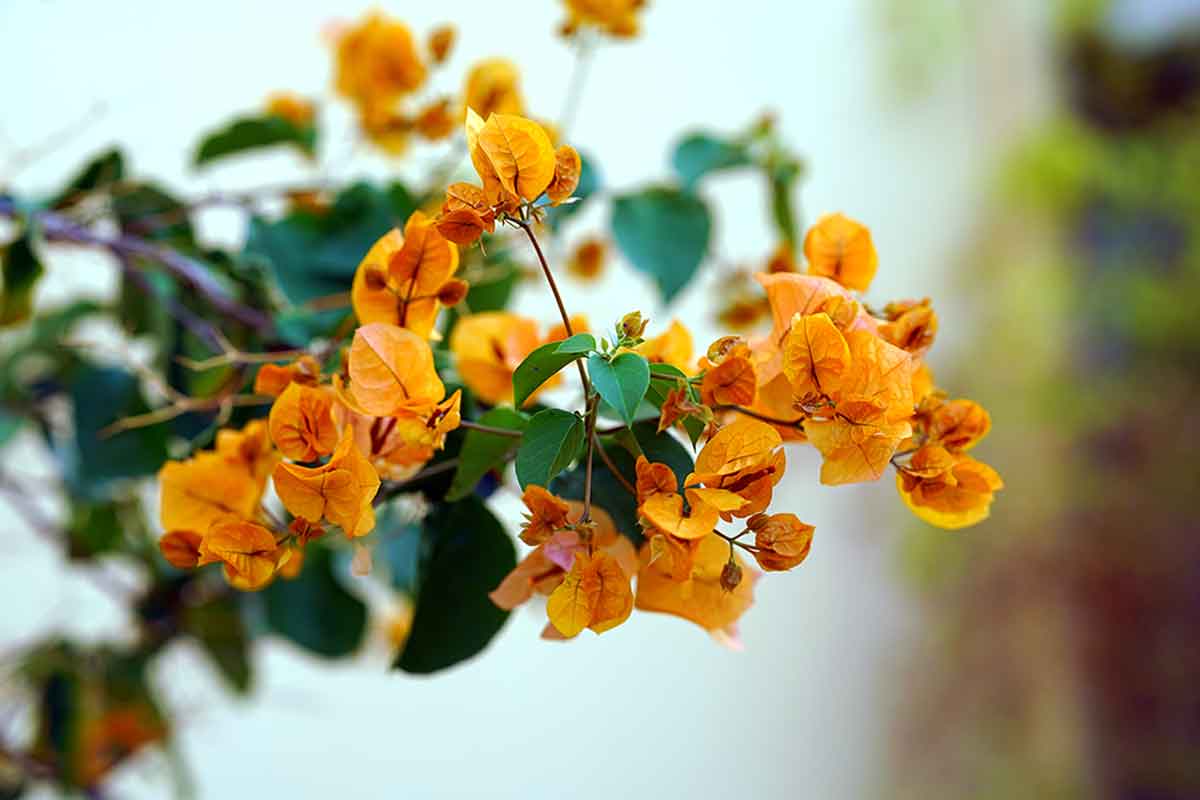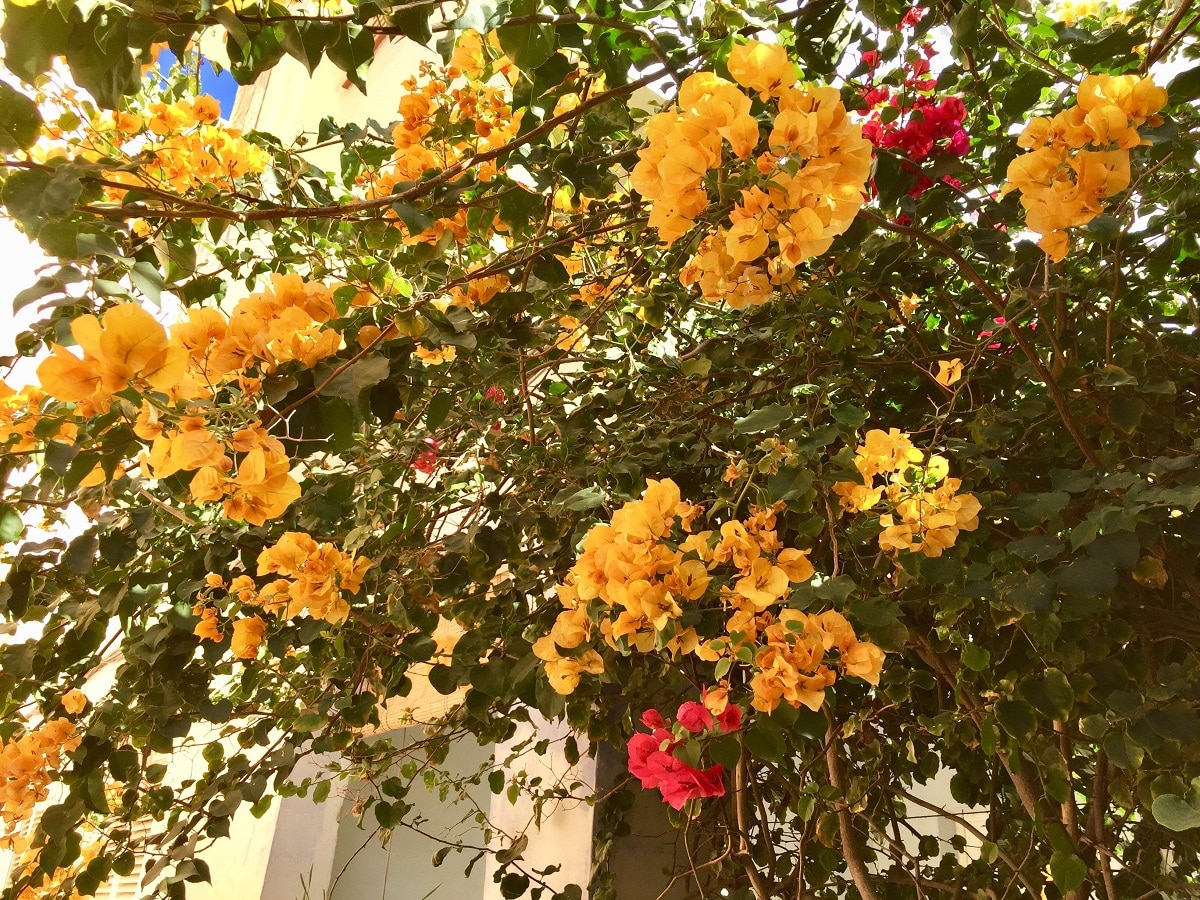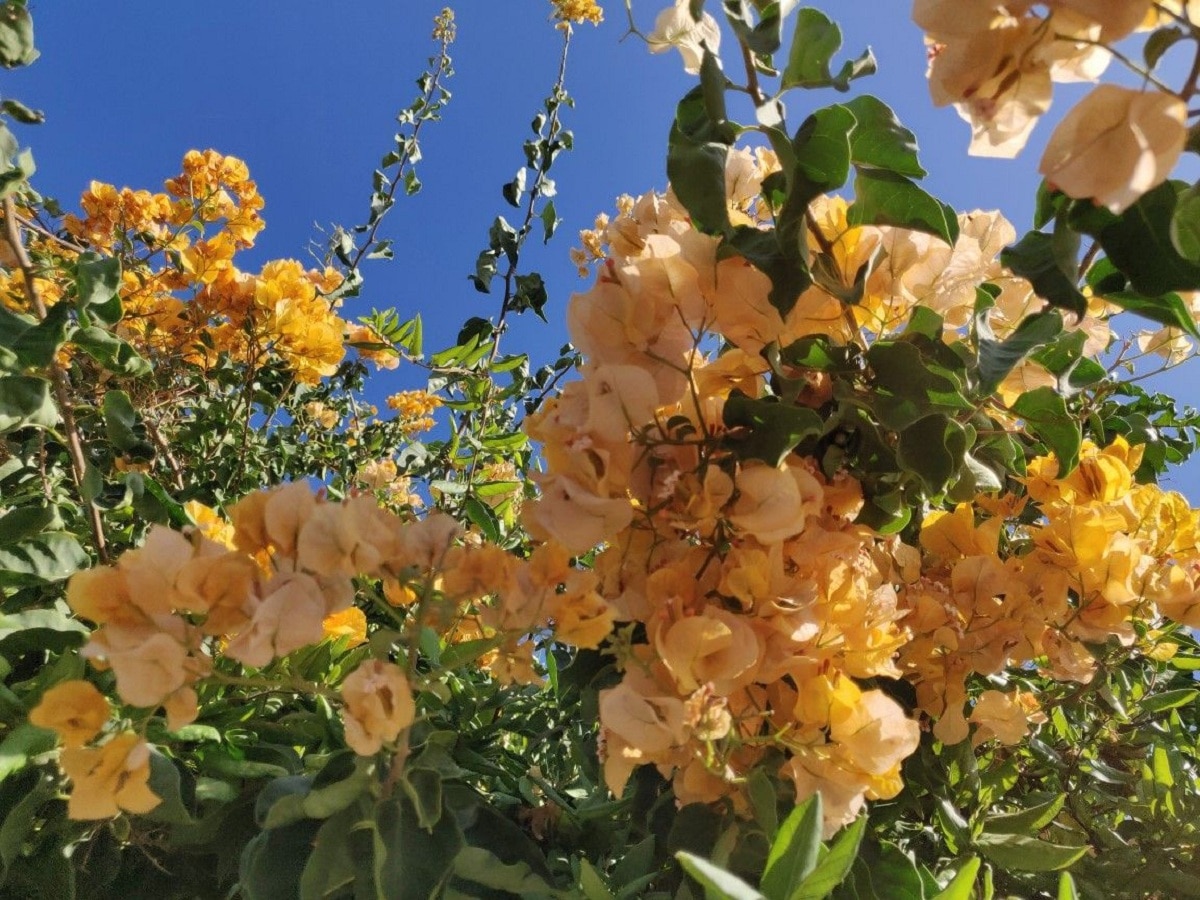
If you are looking for a bright and colorful alternative to traditional rose bushes or ivy, bougainvillea is the specimen you are looking for. This beautiful shrub native to Brazil produces beautiful pink, white, yellow, salmon, red or purple flowers on spiny branches up to 8 meters high. This is a spectacular bush, especially during the warmer months when it displays amazing flowers. In this case, we are going to focus on the care of the yellow bougainvillea.
We are going to tell you step by step how you should take care of the yellow bougainvillea to enjoy this plant with the highest quality.
Key features

It is one of the quintessential summer gifts. Bougainvillea is a climbing plant and as summer arrives it becomes truly feminine. A majestic flowering plant that begins to exude its magnificent beauty as the warmer months approach.
However, to enjoy this wonderful plant, it is important to know how to care for it. Some are amazing and break the myth that bougainvillea is a shrub with delicate flowers.
It is important to know what you really need and what could be your flourishing enemy. And, before we continue, let's be clear: those colors we see in green leaves are not real flowers, but the bracts that protect real flowers.
This climbing bush it can reach 8 meters in height and is very resistant, making it a very easy plant to grow. When we talk about bougainvillea flowers, we're really referring to its bracts, the bright pink parts that almost completely cover the plant in spring and summer (or another color that contrasts with the green of the true leaves). Its actual flowers are yellow or white and so small that they are barely visible from a distance.
Its great strength makes it easy to heal from pruning, so it can be grown in smaller pots without a problem. Its fame as a delicate plant is totally unworthy, and although to keep it in the best conditions, it is best to know the basics of caring for bougainvillea.
Yellow bougainvillea care

Interestingly, bougainvillea is a plant that adapts well to hot summers and cold winters. Although its origin is purely tropical (from Brazil), the truth is that we can enjoy this flowery flower from one year to the next if we know how to protect it from one of its main enemies Shrubs: Drop in night temperatures typical of the harsh months of winter.
If we live in a temperate climate (no frost in winter), we can not only enjoy it outdoors all the time, we can even enjoy it constantly among the flowers. However, if we live in a place where the temperature varies a lot between summer and winter, we will have to take some precautions. Although it is not as cold as it seems (depending on the variety it can withstand between 3 and 7 degrees below zero), if we keep it in a pot it is ideal to hide it in winter.
If we plant it directly in the ground, we can cover it directly with a warm garden blanket during the harshest months to prevent the cold from killing it.
We reached a delicate point in the bougainvillea since the place where we grow it is crucial. Despite being a flowering plant that we could even classify as a field plant, this climbing shrub does not tolerate transplants very well. Its roots are delicate, and once we are at home, it is important to decide whether to let it grow in a pot (a good size is recommended, since depending on the cultivar it can surprise us by growing with it) or directly replant it in the ground with advice during the as long as possible.
Deciding on the second option, we must be full of expectations: bougainvillea planted directly in the ground can reach a height of 10 meters.
Some requirements

Neither demanding nor difficult to grow. In fact, it is intriguing to discover that yellow bougainvillea is a climbing plant used to living in poor soil. Furthermore, unlike many other flowering shrubs, it does not tolerate excess fertilizer well when planted directly in garden soil. And, logically, if you do it in a pot, neither (although in summer and spring you will need liquid fertilizer for your plants every 15 days).
Before, when we commented that it could almost be classified as a field plant, we were referring not only to its low need for nutrient-rich soil, but also due to its low need for water. Although in winter it is ideal to irrigate with rainwater, or let it rest indoors, in summer it is not too demanding: if it is planted directly in the ground, weekly watering is enough, if it is in a pot, watering several times a week is enough. For these irrigations, it is best to avoid getting the leaves wet and focus only on hydrating the roots.
It requires light, but it is important that it receives as much light as possible (indoors and outdoors, either in a pot or in the ground). Only then can we appreciate those yellow bracts. Only in this way can we enjoy a climbing plant that does not require much and is a real gift for the eyes.
Soil and fertilizer for yellow bougainvillea
This plant is adapted to nutrient-poor soils, so it does not require us to enrich its soil with a lot of organic matter. In fact, if we plant it outdoors, it won't do well if we pay too much. On the other hand, in a pot, its needs will increase, and like all plants, it will like the availability of fertilizer, and if it is liquid, better every two weeks in the warmer months.
For substrate mixtures or soils, the only thing to look for is a soil with good drainage to avoid occasional waterlogging, which is not good for the plant. Yellow bougainvillea in winter does not require any fertilizer.
When it comes to how often bougainvillea is watered, we find that the plants here are just as undemanding as the soil. Bougainvillea does not require much watering: in spring and summer it is usually enough to water once a week in the garden, or every 3-4 days in a pot. In winter, it is better to let it get its own rainwater, or at least leave enough room for irrigation. It is important to avoid wetting the leaves when watering, the focus is on whether the soil or the substrate is the one that receives the water.
I hope that with this information you can learn more about the yellow bougainvillea and its care.